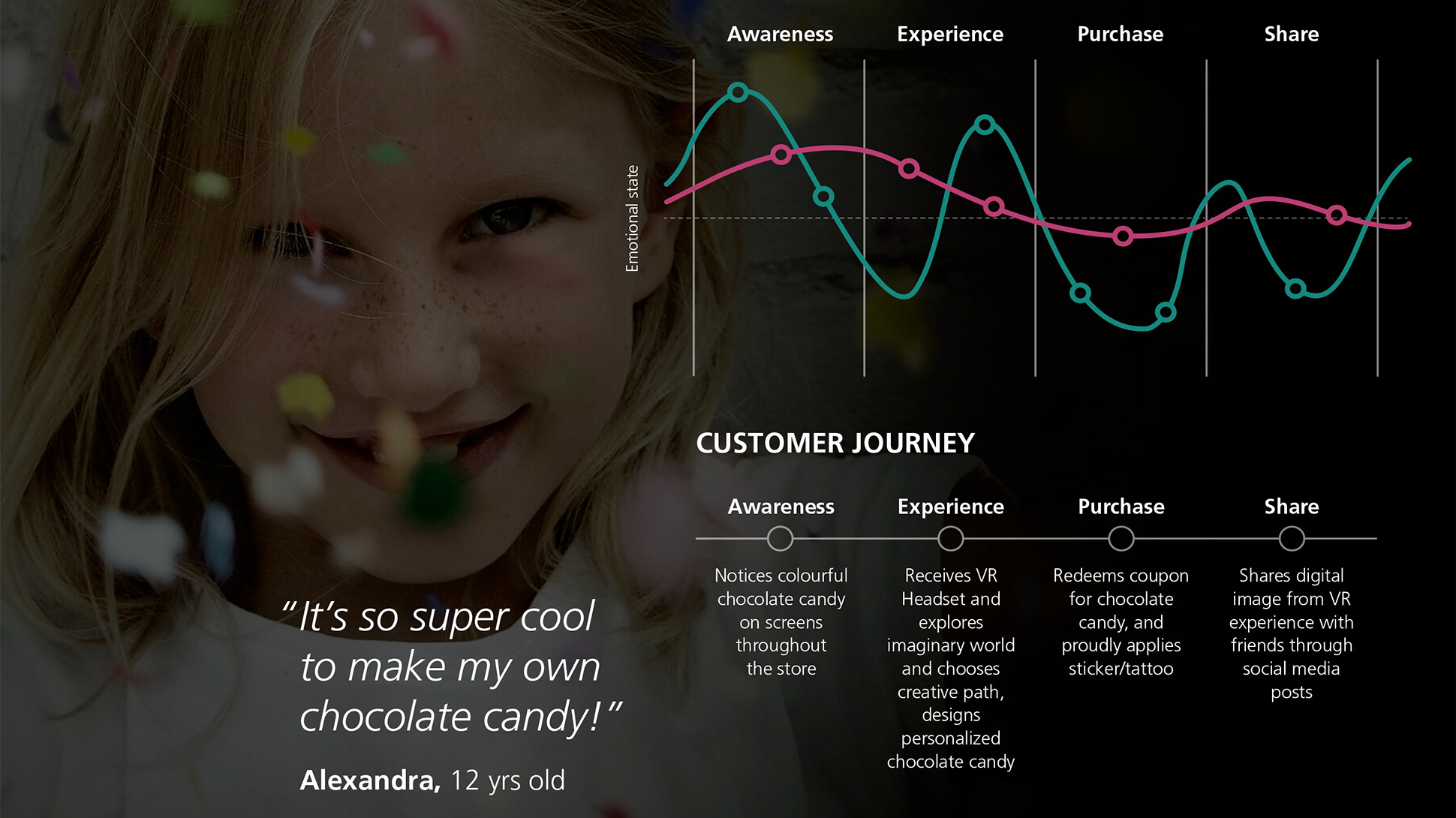Insights
What are buyer personas and why you need one
In any business, the customer always comes first. It doesn’t matter if you have the best product on the market or if you are the best at offering a service, because without customers your business will not survive. Therefore, every company must adopt a customer centric attitude, that is, it must take its customers as a reference point when addressing any strategy, from defining what its final product should be to the way it is going to market or how it is going to attract customers and retain them
Buyer persona. You’ve surely heard this term at some point. It is a detailed description of a person who represents a company’s ideal customer. It’s not a specific customer, nor even a real person: it’s a fictional character but one that gathers common characteristics of all those customers who are most profitable for a company, either because they consume their product more regularly or in larger quantities, or because they manage to connect more easily with them. You may have also heard of customer persona, audience persona, or marketing persona, but essentially all these concepts come to the same thing: only the use to be made of them or the type of product they are going to consume changes.
The definition of the buyer persona is made after a long process in which many types of data are analyzed (demographic, psychological, behavioral…) and in which all departments of the company must be involved. The results are compiled in a detailed report accessible to everyone that has many utilities. On the one hand, they favor decision-making. Don’t know whether to change the packaging of your product or not? Ask yourself how your ideal customer would assume it and you’ll have the answer to your doubts.
A 'buyer persona' is a fictional character that gathers common characteristics of all those customers who are most profitable for a company
Although the main benefit of using a buyer persona is undoubtedly the fact that it allows all teams in a company to align: designers know what characteristics the product must meet and what it cannot have, marketing people know where to find their customers and how to address them, the sales department understands how to treat buyers… Everyone’s work is totally coordinated because everyone is clear about who they are working for.
In this article, we are going to give you some keys to create a useful buyer persona for your company.
How to Create an Effective Buyer Persona?
A common mistake when starting to design a buyer persona is trying to cover a broad audience, which ends up resulting in a profile that is too generic and not very useful. It’s understandable to want to reach as many people as possible because we all want as many consumers as we can get. However, your ideal customer cannot be everyone, as what appeals to some will inevitably alienate others, and what remains in the middle ends up not connecting with anyone.

If, for example, your product is targeted at a luxury segment, trying to reach a broader audience may cause your potential customers to no longer perceive it as exclusive and lose interest.
To choose who your ideal customer is, you should follow the Pareto principle, a statistical phenomenon that roughly determines that approximately 20% of your customers represent 80% of your revenue. So, take a moment to think only about your best customers, those who will bring you the most benefits without major headaches: those are the ones you should consider when defining your buyer persona.
Demographic Data
First, you should typically start with the user’s demographic data, where you should include at least the gender, age, income, place of residence, marital status, level of education, native language, and professional status. It’s important to assign a value to each of these data points, even if you think they are not very relevant. For example, you may want to attract both men and women, but when creating your buyer persona, you should consider who of the two usually buys your product more, who tends to do it more often, who becomes a loyal customer more quickly, who is easier to convince, who causes fewer problems, etc…
Psychological Data
After knowing the demographic data of your ideal customer, it is recommended to also create a small psychological profile that allows you to get an idea of the customer’s personality, values, perspectives, and life goals. It is a crucial part of the buyer persona and unfortunately, it is not always included.

For example, there are individuals who are more sociable than others. Those who give importance to the group value above all things that reinforce their sense of belonging and help them define their position within it, such as power or luxury. Meanwhile, those who are less sociable value minority aspects more and prefer things that promote their personal development over their public image. Similarly, there are more conservative individuals who do not usually accept radical changes well and are more attached to customs and traditions, as opposed to others who are more progressive and enjoy being constantly presented with new challenges.
Furthermore, knowing the values of your customers is important, as users increasingly value brands that share their vision of life.
Problems and Motivations
You are getting to know a little more about your ideal customer. Now it’s time to define the role your brand or product plays in their life. To do this, we usually turn to the so-called pain points, which are the problems that users who come to you usually have. Depending on the product, this problem can be a challenge, a mild annoyance, a fear, an obstacle, a need… In short, it is something that agitates your customers’ lives to a greater or lesser extent.
On the other hand, we have motivations, which could be defined as the positive side of problems. Because if someone has a problem, they generally look for a way to solve it.
Ask yourself what your users’ goals are and how they will try to solve their concerns. And include your company in that equation: now that you know how your customers feel and how they want to feel, you have the keys to offer them your product. Because your customer doesn’t want to hear about what your product does, but how it will improve their life when they use it.
In buyer personas, problems and motivations are often reflected in the form of a textual quote that is used as a title.
The Script
Pay attention because this is, in our opinion, perhaps the most important part of the buyer persona creation process. It has to do with how our customers interact with our product and brand and how they make their purchase decisions. Some refer to this part as the customer journey, others talk about story mapping, and some simply refer to it as the script, but ultimately, it is about analyzing the behavior pattern that is repeated every time your ideal user buys your product and represents their emotional state in the different stages of the buying process, from the recognition of the need (awareness) and exploration (prospecting) to the decision (purchase), loyalty, and recommendation (loyalty and prescription).

In scripts, the customer’s moods are often analyzed, both the negative ones (such as doubts, annoyances, or fears) and the positive ones (joy, relaxation, satisfaction, etc.), which are usually reflected in the form of textual quotes: “I love this sofa for my living room,” “I don’t like having to pay shipping fees,” “Am I spending too much money?” “Has the payment processed successfully?” “I want to share a photo of the new sweater I bought on Instagram”…
Note that in this section, it is crucial to be realistic: it’s not about having your buyer persona do what you would like them to do, but rather accurately describing what your target audience is actually doing.
The Ecosystem
Finally, the buyer persona should also include information about the environment of your customers. This is what we define as the ‘ecosystem’: where your ideal customer spends more time, what their hobbies are, who their influencers are, whom they trust, which media they consult… What is it useful for? First, to have a broader understanding of your user, but fundamentally, the purpose of this data is for marketing tasks: only by knowing where our potential customers are, we can reach out to them. Whether they watch more television than the Internet or if they use Facebook more than TikTok will determine the marketing actions to be taken by your company.
The Publication
Once completed, it is customary to ‘name’ your ideal user with a name that defines their personality well. For example, if your company is in the DIY sector, your buyer persona could be called “Handyman Manny.” A face is also usually added using an archive photo that helps create a first impression in line with their character. Some companies even print the photo of their buyer persona on cardboard and life-size to give it a real presence in the office, so that nobody forgets who they are working for.
The data collected about your buyer persona should be compiled in a detailed document that is shared with all departments of the company so that anyone who needs it can easily access it. The complexity of the report depends on each company: it can range from a simple PDF to a mini-site within the intranet. The key is to make it accessible.
Where do you get the data to create a buyer persona?
To create your buyer persona, you need real data about your users. Otherwise, your buyer persona will not be very useful. You can base this on your own customer database, sales data from your business, market research conducted by expert consulting firms, surveys of your users, panels in which different members of your company share their experiences with customers… And if you have the time and resources, ideally, you should use all of the above together.
You can also complement your results with independent reports. For example, the National Institute of Statistics (INE) or some consumer organizations publish very interesting surveys about the buying habits of citizens.

Knowing who your buyer persona is is a fundamental element for the success of your company. Thinking about who your ideal customer is and putting them at the center of all your decisions will not only help increase sales of your products but also create a stronger bond between your brand and your users.
But in addition to that, simply defining a buyer persona is a very beneficial exercise for any company. Because, as we have seen, the ultimate goal is to compile all the information obtained into a document, but we should not underestimate the process of creating the buyer persona itself. During meetings and data analysis, companies often focus on aspects they may not have considered before, which can be very beneficial for improving their workflows.



